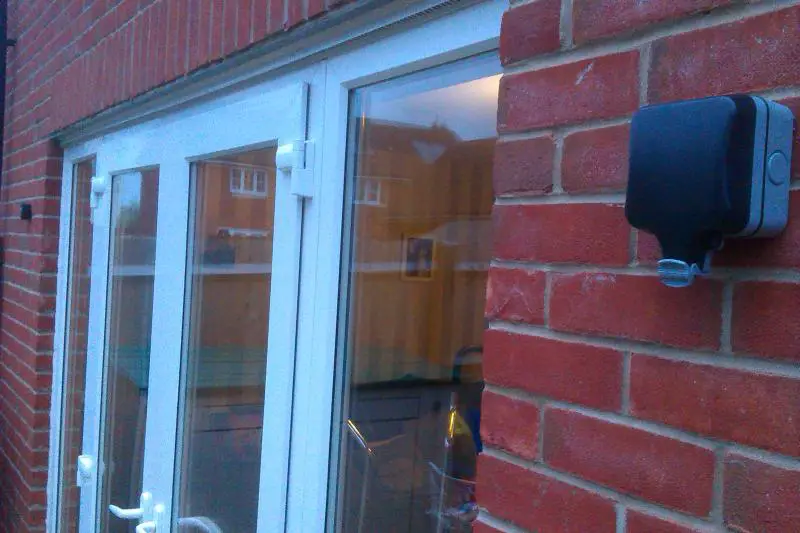Hello all,
Wonder if someone out there can help, I have recently moved into a new build house and decided to install an outdoor socket onto the side of the house for the garden.
When I first moved in I discovered that the builders had installed a standard interior switch to control what should be two outdoor lights either side of the patio doors, but they decided to put two blanking boxes either side of the doors with the necessary cable inside to give the owner (me) the choice of what lights to fit. The garden is quite small, so I've decided to fit a light on one side and a socket on the other.
Having purchased the outdoor socket, I've realised that the cable the electricians routed outside is 3 core with earth, and the socket has ports (or whatever you call them!) for live, earth and neutral. I believe the colour code for the core cables are (harmonised colour cable): -
Grey = Neutral
Bare copper = Earth
Brown = Perm live
Black = Switch live
Having insulated the bare copper wire and fitted it to the sockets earth port, then fitted the grey wire to the neutral port, I tried both the brown and black wires one at a time in the live port, and both combinations didn't work (yes the indoor switch was on )?
)?
I know that 3 core with earth cable is usually used for lights with a motion sensor, but I was under the impression that all you needed to do for a normal (non censored) light, or socket is to discard one of the lives?
Any help much appreciated, pictures in my "outdoor socket" album, thanks all!
Wonder if someone out there can help, I have recently moved into a new build house and decided to install an outdoor socket onto the side of the house for the garden.
When I first moved in I discovered that the builders had installed a standard interior switch to control what should be two outdoor lights either side of the patio doors, but they decided to put two blanking boxes either side of the doors with the necessary cable inside to give the owner (me) the choice of what lights to fit. The garden is quite small, so I've decided to fit a light on one side and a socket on the other.
Having purchased the outdoor socket, I've realised that the cable the electricians routed outside is 3 core with earth, and the socket has ports (or whatever you call them!) for live, earth and neutral. I believe the colour code for the core cables are (harmonised colour cable): -
Grey = Neutral
Bare copper = Earth
Brown = Perm live
Black = Switch live
Having insulated the bare copper wire and fitted it to the sockets earth port, then fitted the grey wire to the neutral port, I tried both the brown and black wires one at a time in the live port, and both combinations didn't work (yes the indoor switch was on
I know that 3 core with earth cable is usually used for lights with a motion sensor, but I was under the impression that all you needed to do for a normal (non censored) light, or socket is to discard one of the lives?
Any help much appreciated, pictures in my "outdoor socket" album, thanks all!



